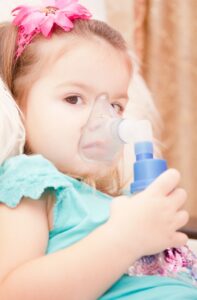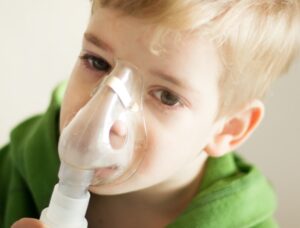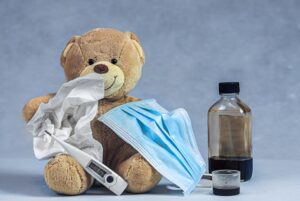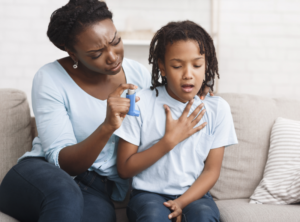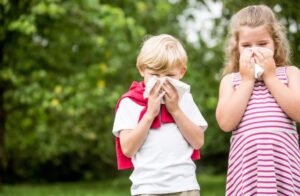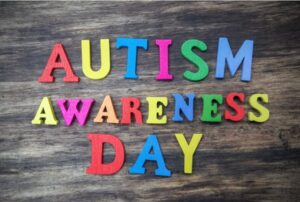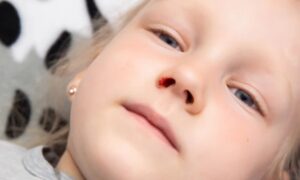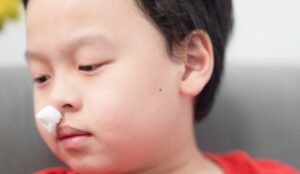Childhood asthma is a chronic condition that affects the airways, making it difficult for children to breathe. It leads to symptoms such as wheezing, coughing, shortness of breath, and chest tightness. While genetics play a role in asthma development, environmental factors are often the primary triggers for asthma attacks. Identifying and managing these triggers is essential for controlling asthma and ensuring a better quality of life for children.
Indoor Air Pollution and Asthma
Indoor air pollution is one of the leading environmental triggers for childhood asthma. Common household pollutants include dust mites, pet dander, mold, and volatile organic compounds (VOCs) from cleaning products and paints. Poor ventilation can exacerbate these issues, trapping allergens inside the home. Parents should focus on maintaining a clean indoor environment by using air purifiers, vacuuming frequently, and avoiding harsh chemicals that can irritate the airways.
Outdoor Air Pollution and Its Impact
Air pollution from traffic emissions, industrial activities, and wildfires can worsen asthma symptoms in children. Pollutants such as nitrogen dioxide (NO2) and particulate matter (PM2.5) inflame the respiratory tract, leading to increased asthma attacks. On high pollution days, children with asthma should limit outdoor activities, especially in urban areas with heavy traffic. Checking air quality indexes and wearing protective masks when necessary can also help reduce exposure.
Allergens That Trigger Asthma
Environmental allergens such as pollen, mold spores, and pet dander can significantly impact children with asthma. Pollen from trees, grass, and weeds is a common seasonal trigger, while mold thrives in damp environments such as basements and bathrooms. To minimize exposure, parents can use hypoallergenic bedding, control humidity levels, and keep windows closed during high-pollen seasons.
The Role of Secondhand Smoke
Secondhand smoke is a major asthma trigger and can severely impact lung development in children. Exposure to tobacco smoke increases inflammation in the airways, making children more susceptible to asthma attacks. Even thirdhand smoke—residual nicotine and chemicals on furniture and clothing—can be harmful. Parents and caregivers should ensure a smoke-free environment to protect children from unnecessary respiratory distress.
Climate Change and Asthma
Rising global temperatures and increased air pollution levels are contributing to a higher prevalence of childhood asthma. Climate change leads to longer pollen seasons, increased wildfire smoke exposure, and worsening air quality. These factors collectively make it harder for children with asthma to manage their condition. Advocacy for clean energy policies and climate-conscious initiatives can help reduce the impact of environmental triggers in the long run.
Preventive Measures for Asthma Management
Managing childhood asthma involves more than just medication; lifestyle and environmental adjustments are crucial. Regular doctor visits, an asthma action plan, and reducing exposure to triggers are key strategies. Schools and caregivers should also be educated about asthma management to ensure children receive the necessary support in different environments.
Here are some effective and feasible environmental control measures to help reduce the frequency and severity of childhood asthma attacks:
- Reduce exposure to allergens: Common allergens include dust mites, pollen, cigarette smoke, and mold. Regularly clean the floors and bedding in your home, and keep the air fresh, avoiding pets in the bedroom.
- Control indoor humidity: Maintain indoor humidity below 50% to reduce the breeding of dust mites and mold. Using a dehumidifier and ensuring good ventilation can help achieve this goal.
- Remove allergen accumulations: Minimize carpets, heavy curtains, and sofa cushions, and use easy-to-clean materials such as leather or plastic.
- Pay attention to indoor air quality: Ensure good indoor ventilation and avoid using fragrances and air fresheners that may cause allergies.
- Avoid secondhand smoke: Try to prevent your child from being exposed to secondhand smoke, which can worsen asthma symptoms.
- Regularly clean air conditioners and filters: Ensure that air conditioners and filters are cleaned regularly to reduce the accumulation of dust and allergens.
- Avoid keeping pets: If possible, avoid keeping pets temporarily, as pet hair can be an allergen.
- Regular check-ups: Regularly take your child for check-ups to promptly detect and control asthma symptoms and avoid triggering factors.
Final Thoughts
Childhood asthma is a complex condition influenced by various environmental triggers. By understanding and addressing these factors, parents and caregivers can create a safer and healthier environment for children with asthma. Proactive steps such as reducing indoor air pollutants, avoiding secondhand smoke, and monitoring outdoor air quality can significantly improve a child’s ability to manage asthma and lead a more active life.




